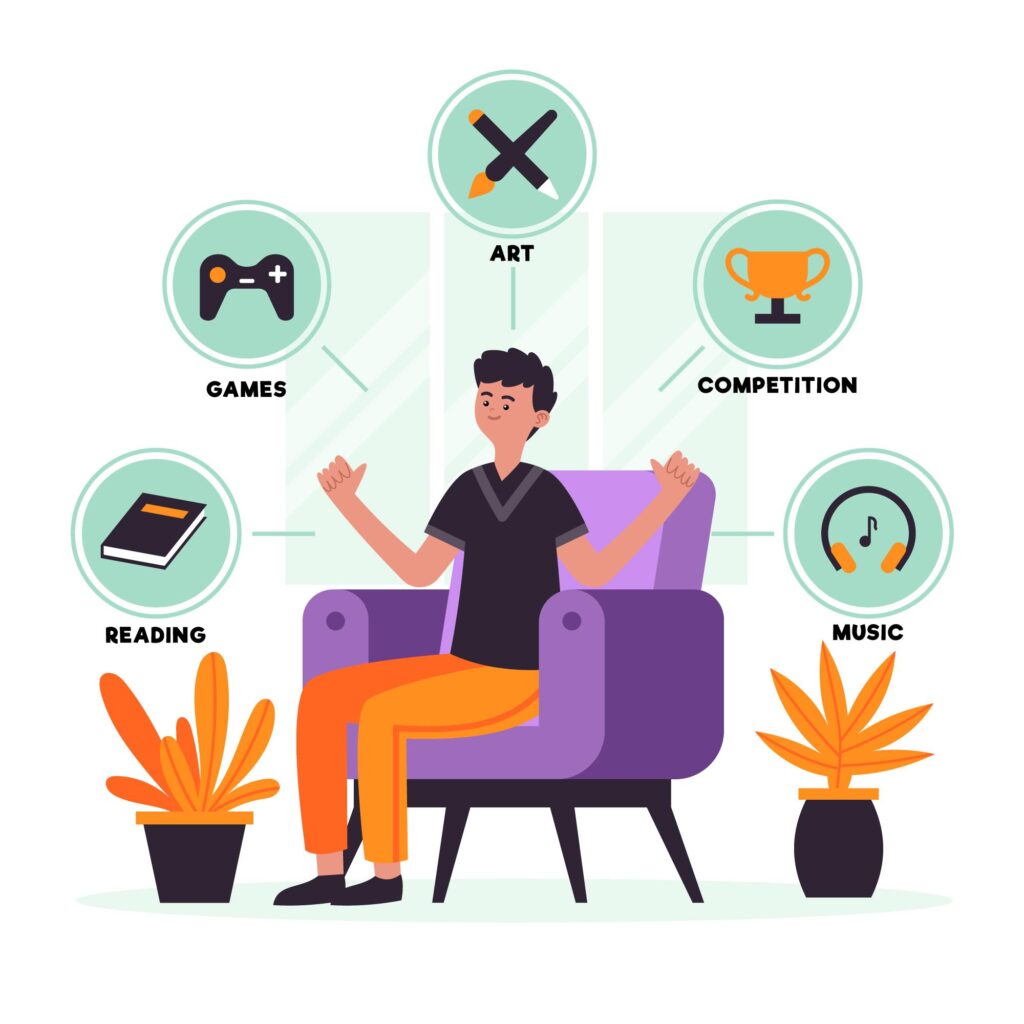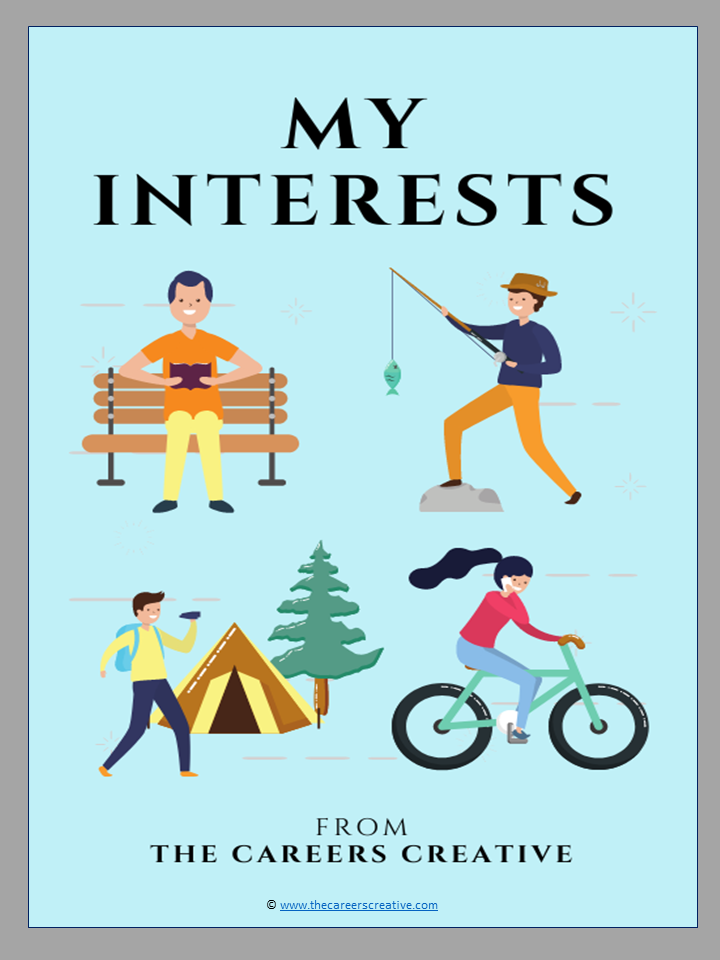The Ultimate Guide to Finding a Career Path for Teachers and Students
It wasn’t so long ago that factors such as location, family background, and education severely limited the jobs open to an individual on leaving school.
These factors still play a significant role in the career paths open to our students, but there is no doubt that there is more choice now than ever.
With so many attractive career possibilities, it can be difficult for our students to decide on a clear direction to focus their energies, either while still at school or upon entering the world of work.
This article will examine five ways we can help our students navigate the noise and uncover a career path that they will find rewarding and fulfilling – an essential first towards developing Job Search Skills.
Create a Life Map Activity
Get students to create their own Life Map either in digital form or make one with coloring pens and paper.
Why not take a look at our interactive digital resource below and get everything you need to teach your students how to create their own Life Map.

A Complete Interactive Project
Through discussion, goal-setting, video, brainstorming, graphic organizers, and creative design activities, students learn to:
This is a fully interactive resource containing an editable Google Slides™ and a printable PDF version.
Suitable for classroom learning and remote learning, slides contain notes detailing how to get the most out of the wide range of activities.
1. IDENTIFY YOUR INTERESTS
When it comes to choosing a career to pursue, choosing a suitable direction isn’t always an obvious decision for our students.
In fact, sometimes it requires the skills of a detective to painstakingly piece together clue after clue to eventually reveal some prime suspects to consider.
The perfect place to look for these first important clues is in the interests of the student.
While there is a veritable tsunami of just-follow-your-passion memes out there in the wider culture, that isn’t what we’re talking about here. For example, a student might love napping or playing Fortnite, but it may not be the path to a rewarding career. – becoming a successful bed-bound Games Developer notwithstanding!
However, there’s no doubt that identifying the student’s interests is a great starting point. In combination with the other methods below, this will begin to reveal jobs and careers that may be suitable for them.
So, how do we get at the interests of a student?
My Interests Activity

- Assign each student a talking partner for this activity.
- Have each student take a turn asking the other person about their interests and hobbies.
- As each student answers, the other student makes a brief note of each interest or hobby mentioned.
- When both students have had a chance to respond, each student sits quietly for 5 to 10 minutes and brainstorms a list of as many jobs/careers they can think of to relate to their partner’s interests, hobbies, likes, etc.
- When the time is up, students swap their pieces of paper with the jotted down recommended jobs and careers options.
- Each student then ranks each item on their list according to how appealing they are to them.
During this activity, be sure to emphasize to the students to be very liberal in defining what constitutes an interest. Think sports, books, TV shows, movies, crafts, cooking, painting, knitting, doodling, taking care of pets, younger siblings, etc, as well as those things more obviously career-related.
We can sometimes find our dream job amidst the banalest of our pastimes.
WANT TO HELP STUDENTS CONNECT THEIR INTERESTS WITH RELATED SKILLS? CHECK OUT THIS FREE RESOURCE

A fun FREE activity to help students connect their interests and passions to skills development through the completion of a simple worksheet. Students then take part in discussions with their talking partners, working to link their interests and skills with jobs they might like to do in the future.
This activity is suitable for a wide range of ages and abilities as students will access the activities at their own level.
2. Seek Out Second Opinions
Do you remember the first time you heard a recording of your own voice?
For many people, this can come as something of a revelation. The first time I heard my voice, I was astonished, and not in a pleasant way. A slightly nasally and somewhat tinny tone emanated from a friend’s old cassette player, rather than the deep, rumbling tones of a James Earl Jones or Sean Connery I had expected.
The point here isn’t about how disappointed I was with my voice – though it was heartbreaking! I’ve come to terms with the early end of my dream of being a world-renowned voiceover artist. No, the point is that sometimes we are not the most objective judge of ourselves and our personal abilities.
That’s where friends and family come in. Who knows us better than our own flesh and blood? Who gets us more than the people we choose to spend our time with, and who choose to spend their time with us?
The Friends and Family Survey Activity

As a whole class, brainstorm a list of questions to include in the survey. Some questions might include:
- What activities do you think I enjoy most?
- What am I good at?
- What jobs/careers do you think I’m best suited to temperamentally?
- What jobs/careers do you think I’m best suited to skills-wise?
- What jobs/careers do you think I would be happiest in?
When the class has agreed to the survey questions, type them up as a questionnaire and print off enough copies for each student – or you may also like to do this electronically via email to save on paper.
Then, students should identify five friends or family members to which they can distribute the survey.
When students have received their responses to the survey, organize them into smaller groups to share their feedback with.
In their groups of three or four, students share their responses with their peers.
- What surprised them about the responses?
- What didn’t surprise them?
- Which of the recommended jobs or careers appeals the most?
- Which of the recommended jobs or careers appeals the least?
Remind students that, as with any of the other activities designed to identify a career path, the thoughts and feelings of their friends and family members are only one piece of the puzzle. They still, ultimately, have the final say in choosing their own career path.
3. Note Strengths & Weaknesses
When deciding on a career to pursue, students must make their decisions fully aware of their strengths and weaknesses.
This doesn’t mean that we can only pursue work in areas in which we have particular strengths or talents. It just means that we must acknowledge areas where we may be weak and do what is required to compensate for any deficiencies.
For example, if you’re male, love playing basketball, and are 5’3” (160cm) in height, then you’ve got an uphill climb ahead of you.
The average height of an NBA player today is 6’6” (198cm) tall. The likelihood of overcoming such an inherent disadvantage is small (no pun intended).
However, it’s also true that the shortest NBA player ever was Muggsy Bogues, and he stood, you’ve guessed it, 5’3” tall.
What we lack in one area, we can learn to compensate for in other areas or overcome through sheer grit and determination. But, to do so, we’ll need to have a realistic assessment of our strengths and weaknesses.
While there are many professional tools designed to assess all kinds of abilities and personality traits, the following simple activity can reap some beneficial information too.
Strength and Weakness Audit Activity
- First, assign some quiet time for students to complete this activity. Be sure to allow a suitable amount of time for the age and ability of your students to complete this task thoroughly.
- Instruct students to divide a piece of paper into two columns, one titled Strengths and the other Weaknesses.
- Students then complete each of the columns based on what they assess their strengths and weaknesses to be.
- To gain another perspective, students then ask family members or close friends to complete a table assessing the student’s perceived strengths and weaknesses too.
- Compare the assessments: How do they differ? Where are they similar? What jobs or careers are suggested by these audits?
- What actions could the student take to improve upon their weaknesses?
4. Try New Things!
As anyone who looks back on their twenties from the lofty heights of 40+ can attest, growing up takes a looong time!
Students needn’t, perhaps shouldn’t, feel they must decide on a clearcut career path too early. Youth is for experimenting, particularly when it comes to determining something as important as how they will earn a livelihood.
Now is the time to try on as many hats as take the young person’s fancy.
In today’s culture, students are often told to ‘follow their heart’, but often the heart doesn’t yet know what it wants.
The best way to find out what exactly the heart desires is to introduce it to as many potential suitors as possible.
The Sample the Delights Activity
Trying new things means making a concerted, organized effort to do just that. This applies to all sorts of experiences, whether job-related or activities that are seemingly unrelated to the world of work. Who knows which direction true love may lie in.
Here are just two ways a student can sample the delights. Have students:
- Make a plan to try five new things this year. These ‘things’ could be anything from:
- learning a language
- taking up a new sport
- volunteering at an animal shelter
- learning a musical instrument, etc.
Opening ourselves up to new experiences in these ways often leads to forming new relationships and engaging in new experiences we may not typically have encountered or experienced.
- Try to gain some volunteer work experience, especially in areas they know little about. This could take the form of volunteering to help out at a local business or even by undertaking an online ‘simulated’ work experience. To find out how students can gain work experience from their own home with naught but a laptop and an internet connection, check out our article How Students Can Gain Work Experience in a Locked-Down World here.
5. Create a Life Map
Creating a Life Map is an engaging and fun way for students to explore how decisions they have made in their lives so far have impacted their present reality.
A Life Map is a type of visual timeline of their experiences that details the key moments of a person’s life; from their birth up until the present moment and even projecting into the future.
Life Maps help students take stock of where they are now, how they got there, as well as helping them to plan for the future.
Creating a Life Map is a useful exercise to help students improve their self-awareness. This will help you to make the best possible
choices and develop a growth mindset – a necessity for success in life and career.
6. Identify a Role Model
When we’re young, we all have heroes. Whether they take the form of firefighters or funny-faced cartoon characters, little ones know how to look up to their heroes.
For some reason, though, as we get older, we tend to be more inclined to go our own way, to blaze our trail alone.
We perhaps forget that we learned to talk by emulating others. Walking, eating independently, riding a bicycle were also, to a large degree, possible only by watching others closely.
Why should finding our career be any different?
Finding people in the world to admire can help students find a career to follow.
Choose Your Own Hero Activity
‘You can’t be what you can’t see’, the self-help gurus tell us, and there is undoubtedly some truth to this catchy maxim. Reading their biographies (or autobiographies) is an effective way to learn more about our role models and how they achieved their successes.
- Challenge students to list five people they admire in any field. The subjects of these biographies should be people who have excelled in their fields, but the content need not be obviously career-related.
- From this list, students choose their top 3 and source the best available biography/autobiography on that person.
- Set the students an appropriate amount of time to read each biography.
- When they finish reading each biography, students should write a brief report on their main takeaways.
This is something of a fishing expedition. While the student may not necessarily wish to emulate the career paths of the subjects of the biographies they choose, there will be much they can learn from the lives of those they admire – even if it’s what not to do!
When writing their report, encourage students to focus on things they can learn from the lives of each person.
- How did they spend their time?
- What talents did they have?
- What skills did they learn?
- What support did they receive?
- How did they overcome the challenges they faced?
Credits:
Author: Shane Mac Donnchaidh
Featured Image Credit: People vector created by vectorjuice – www.freepik.com

